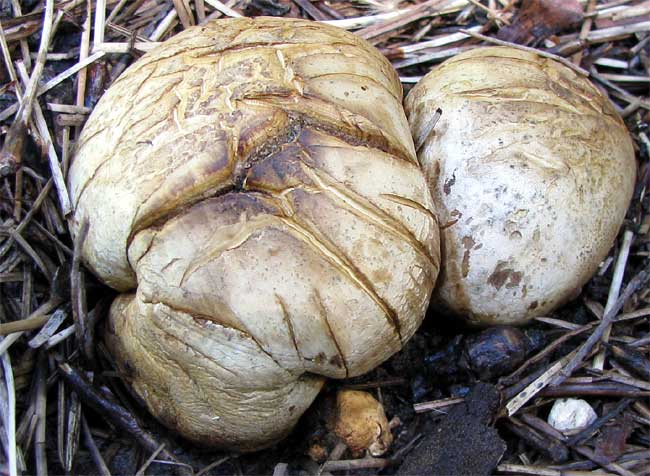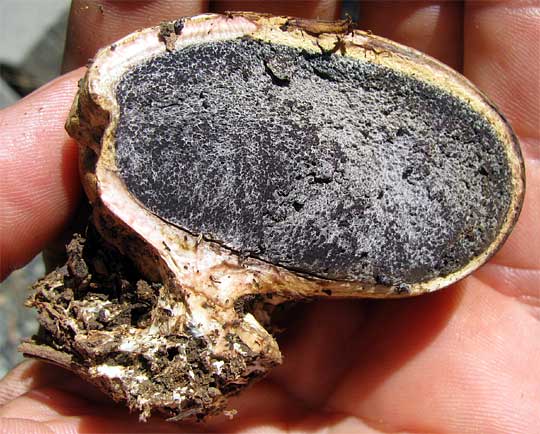Excerpts from Jim Conrad's
Naturalist Newsletter

from the September 6, 2009 Newsletter, issued from the Siskiyou Mountains west of Grants Pass, Oregon:
EARTHBALLS
For about a month as I've been watering Anita's flower garden each morning I've been watching some fungi develop. They look like medium-size brown potatoes lying on the moist ground below a pot's overflow tap, as you can see above.
I'd assumed that they were puffballs -- that on their tops eventually holes would develop where spores would escape, but instead the things began developing cracks with no signs of holes. To figure things out I had to pick one, and the moment I had one in my hand I though that it was no puffball: It was too hard and too heavy for that. I cut one open and saw what you can see below:

It looked like a puffball's interior, full of spores, and purple ones at that. In fact, the top picture shows purple spores beginning to be issued from the deepest fractures cutting into the big one's top.
The dark purple mass in the earthball's center eventually matures into a mass of dry spores, similar to what happens with the puffballs. However, no exit pore for the spores ever develops. The fungus's leathery cover simply gets progressively thinner and more brittle as the dark purple, firm, heavy spore mass -- the gleba -- dries into a powdery mass of dusty black spores. This week while thinning the strawberry beds I found several old ones that practically shattered when I poked them, releasing clouds of spores.
On the Internet, pictures were found suggesting that this is the Purple-spored Puffball, CALVATIA CYATHIFORMIS, occurring practically worldwide, and considered to be good for eating, as long as you pick them before the interior mass begins forming spores, when the puffball still is white inside.
The species